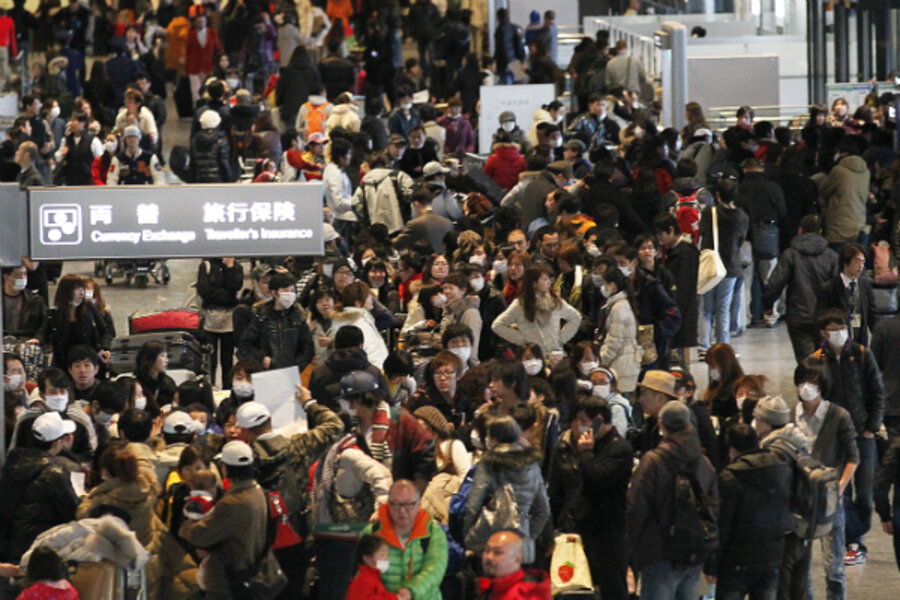Japan nuclear crisis: US announces evacuation options
Loading...
| Shingu, Japan
After reports that some spent fuel rods at Japan's Fukushima Daiichi nuclear power plant may now be completely dry, the US embassy on Thursday urged American citizens within 50 miles of the threatened plant to relocate and announced it would help US citizens evacuate the country by plane.
"The Department of State has authorized the voluntary departure, including relocation to safe areas within Japan, for family members and dependents of US Government officials who wish to leave northeast Japan. The US Government is also working to facilitate the departure of private American citizens from the affected areas – that is a 50-mile radius of the reactor," announced US Under Secretary of State Patrick Kennedy.
The recommendations followed US Nuclear Regulatory Commission chairman Gregory Jaczko’s Wednesday testimony to a congressional subcommittee, at which he warned that radiation levels were very high and said his organization believed that all the water in the spent-fuel pool at the No. 4 reactor likely had run dry, an extremely dangerous situation.
Representatives of the Tokyo Electric Power Company (TEPCO), the plant's operator, denied Mr. Jaczko’s claim and Japanese officials did not change the government's current 20-kilometer (12-mile) evacuation zone for those living near Fukushima.
The conflicting views mark a departure as the US had been telling its citizens to listen to Japanese authorities until now.
Meanwhile, a new round of emergency efforts to control the escalating disaster at the Fukushima Daiichi nuclear power plant began Thursday, including using a water cannon and talk of progress on a new power line to the plant as hopeful ways to control the rising temperatures at all six reactors.
Throughout the day, helicopters dumped water onto the reactors at the crippled plant and fire trucks prepared to spray the buildings with high-pressure hoses. TEPCO also announced it would begin work to restore power lines so the plant’s regular cooling system could be started up again. The system was wiped out after last Friday’s massive earthquake in northern Japan.
Most attention today focused on reactor buildings No. 3 and No. 4, where water in pools holding spent fuel rods may be nearly gone. Without water, the rods in the uncontained pools will heat up and emit large amounts of radiation.
Very high radiation levels at the plant are making any work at supplementing those pools inside the buildings extremely difficult, however.
Two Japanese Self-Defense Force helicopters made four drops of 7.5 tons of water each onto the No. 3 reactor building Thursday morning. The operation took place despite radiation levels of 87.7 millisieverts per hour 300 feet above the building – very near Japan’s standard yearly exposure limit for power plant workers.
No immediate reduction in radiation levels was observed following the drops, according to reports. Experts said getting the water inside the building from above would be difficult, and filling the large pool would take hundreds of trips and Defense Minister Toshimi Kitazawa announced a temporary end to such water drops.
Instead, fire trucks equipped with high-pressure hoses began dousing the storage pools from the ground in the evening.
Meanwhile, partially melted-down fuel in reactors one and two still desperately needed cooling. The temperature of spent fuel storage pools near the plant’s other two reactors (No. 5 and No. 6) also rose slightly, but officials maintain this did not present an immediate threat.





